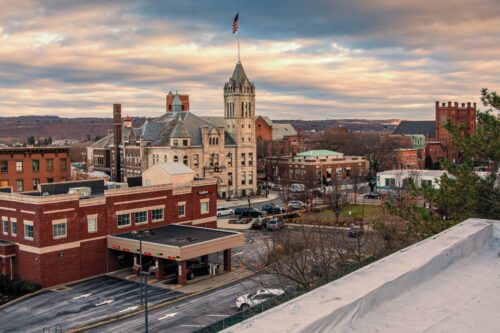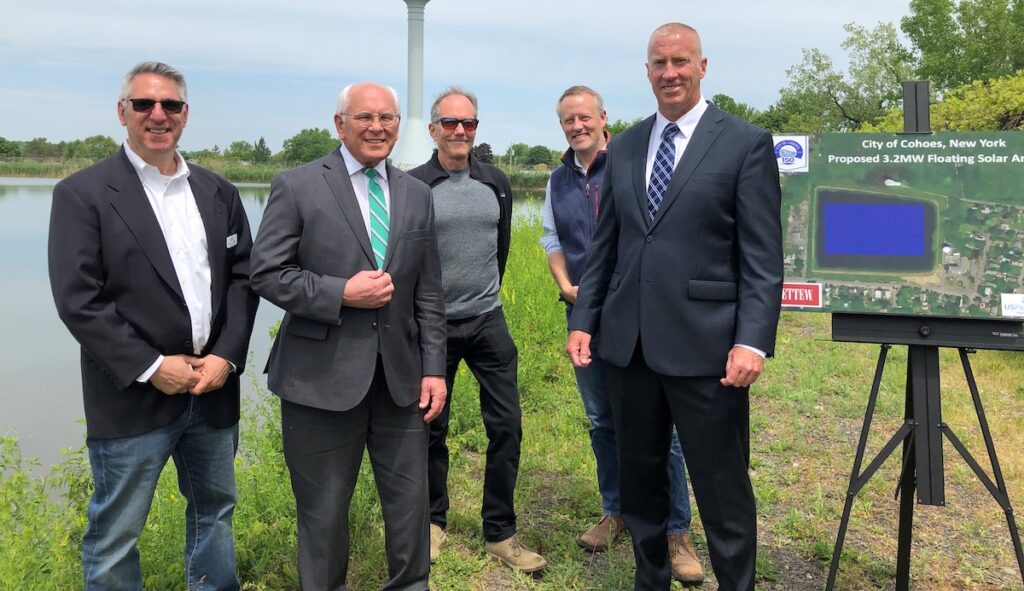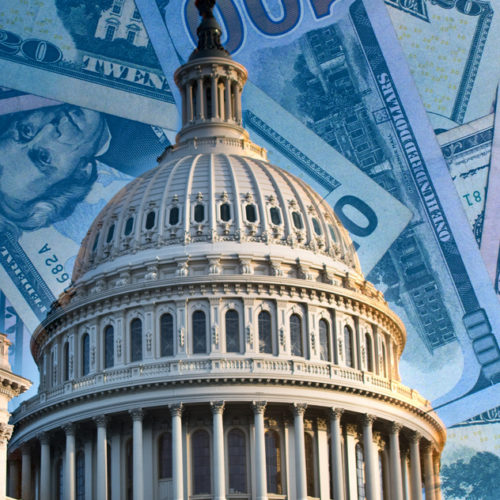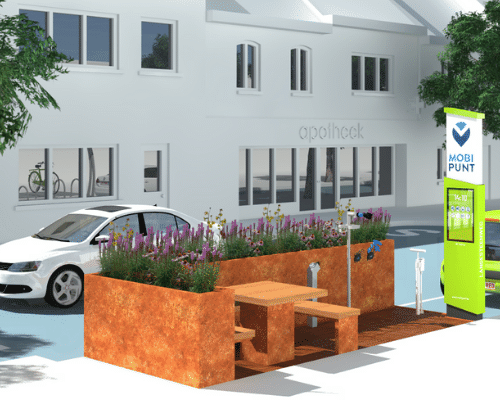
Need Help Advancing Local Climate Action? Try Community Project Funding.
How does a small town outside of Albany, New York, turn its municipal reservoir into a floating solar array? With a new source of funding from Congress.
Cohoes, New York, recently did just that, securing $3 million of Community Project Funding (CPF) to construct, own, and operate an innovative 3.2 MW floating solar array — one of the larger floating solar projects in the country.
With the anticipation of historic funding opportunities through the 2021 Infrastructure Investment and Jobs Act, it’s easy to forget about the flexible CPF funding already available to help communities accelerate the transition to clean energy economy. CPF, a reincarnation of “earmark” funding, is discretionary spending available to senators and representatives for local projects and is worth up to one percent of total discretionary spending — approximately $15 billion. It retains the flexibility that made earmarks so popular while improving accountability, disclosure, and transparency requirements.
With Congress now seeking nominations for Fiscal Year 2023 projects, communities should meet with elected officials to make the case for their next big ideas. Many Congressional offices have set early April deadlines for initial project submissions, but this is now a funding opportunity linked to the annual appropriations process for communities to keep in mind going forward. Here are our top suggestions for aligning CPF proposals with local climate action priorities.
Embrace the Broad Eligibility for Community Project Funding
Given its broad eligibility requirements (applicants are primarily required to demonstrate community support), CPF can be tapped to invest in a wide range of innovative projects that bolster a clean energy economy and mitigate climate change:
- Low-income solar installations? Check.
- Community resilience hubs? Absolutely.
- All-electric new construction? Indeed.
- Transit hub upgrades to accommodate electric buses? You bet.
- Even floating solar like in Cohoes? Already tried and tested!
For example, take the $211 million secured for communities in Illinois. Senator Tammy Duckworth shared in a recent press release that CPF will advance “important projects that will help clean up our water, improve our state’s infrastructure, expand healthcare access, create jobs and tackle environmental injustice issues facing communities across Illinois.” That broad range encompasses projects including Chicago’s clean energy retrofits program, Evanston’s accessible solar program, and a high school job training program for renewable energy infrastructure.
Advance Unique Local Needs
Community Project Funding offers an alternate path to make federal funding requests — one that is championed by each member of Congress based on what their constituents need. This gives communities large and small the ability to focus on local needs — and opportunities — as opposed to having to “check the box” by tailoring projects to be able to conform to federal agency priorities. This can feel like fitting a square peg into a round hole. Accordingly, savvy local leaders are demonstrating what’s possible for advancing innovative, sustainable projects through CPF requests.
For instance, the Cohoes’ floating solar project will generate enough clean electricity to power all municipal facilities for the town of 17,000, save an estimated $500,000 in annual electricity costs, and advance more sustainable land use practices (by avoiding developing solar on land altogether). Without Congress’ critical upfront funding, the Cohoes’ project would never have seen the light of day.
As a small city, Cohoes lacks the budget to regularly provide matching funds for competitive grants, and the project did not clearly fit within other grant requirements. Ultimately, Cohoes’ floating solar project highlights how even small, capacity-constrained communities can leverage CPF to advance sustainable community revitalization and accelerate the transition to a clean energy economy.
“The $3 million in Community Project funding, championed by Congressman Paul Tonko and Senate Majority Leader Chuck Schumer, is the foundational support we needed to make this floating solar model work. It provides both financial resources and affirmation for our project. We are confident that, with this core funding, we will be able to secure the remaining resources needed.”
– Joe Seman-Graves, Cohoes’ City Planner
Such an innovative proposal naturally attracted attention from New York Representative Paul Tonko, himself an industrial engineer and a champion of this project:
“The Cohoes floating solar project provides an incredible opportunity to localize power generation and drive down costs for the city, all while supporting our nation’s clean energy goals. I pushed hard to secure funding for this initiative, and I am elated to see those critical federal resources now being delivered. It is my hope that this project will serve as an innovative model for communities across the nation. As we begin the process of FY2023 Community Project Funding, Congress must use this powerful opportunity to invest in our clean energy future so that we can continue to make bold advancements in our infrastructure, create good jobs, and build a better, healthier planet.”
– U.S. Representative Paul Tonko (NY-20)

Lay Groundwork Early and Build Momentum
Upon hearing that earmarks might return to Congress in 2021, the team in Cohoes assembled a proposal that would meet community needs and stand out in a crowd. Their approach — similar to cities as large as Chicago — offers local governments and their community partners a way forward as they prepare CPF requests for FY2023 and beyond:
- Work with local and regional stakeholders to forge partnerships and identify the highest priority, shovel-ready requests (i.e., those that can easily demonstrate strong community support). Note that Congress expects projects to be completed (or progress substantially) within a year of funding.
- Use this opportunity to elevate innovative, ambitious projects that advance equitable climate action and cannot tap into funding from other federal sources. For particularly novel projects, communities may need to demonstrate precedent by highlighting a similar (though not necessarily identical) “proof of concept.”
- Engage Congressional representatives early to understand their office’s submission process and request projects that align with their priorities. Educate representatives about your own priorities. Make it easy for them to tell your project’s story and answer the question “Why is this project particularly important and deserving of Congress’ time and money?”
- Recognize that CPF is first and foremost a Congressional district-level competition. In FY23, the top 15 local projects will be considered by Congressional committees. Once a project makes it through the make-or-break district-level competition, the odds of success increase substantially. For context, in 2021, representatives could submit up to 10 projects, and Congress funded over 4,000 requests — an average of 7.4 funded projects per member of Congress.
- Sustain momentum as the project advances through the appropriations process to demonstrate progress and continued local interest. Continue collecting stakeholder support and publicizing the benefits of pending projects to bolster your case.
Even with unprecedented federal infrastructure funding now coming from agencies, CPF is well-suited for communities to consider as well, offering a (relatively) streamlined opportunity for community-supported, shovel-ready climate action projects.
Leveraging Community Project Funding for Climate Action
With the right mix of community support, preparation, and creativity, local governments can apply for Community Project Funding now to advance innovative climate action. Applicants should consider their local representatives’ immediate submission deadlines while also reaching out to discuss future years of CPF requests (and other programs). Opportunity is knocking at your door — time to bring your project forward and knock on theirs.
To learn more about Community Project Funding and other federal funding for local climate action, check out our “Federal Funding Opportunities for Local Decarbonization” (FFOLD) tool.

